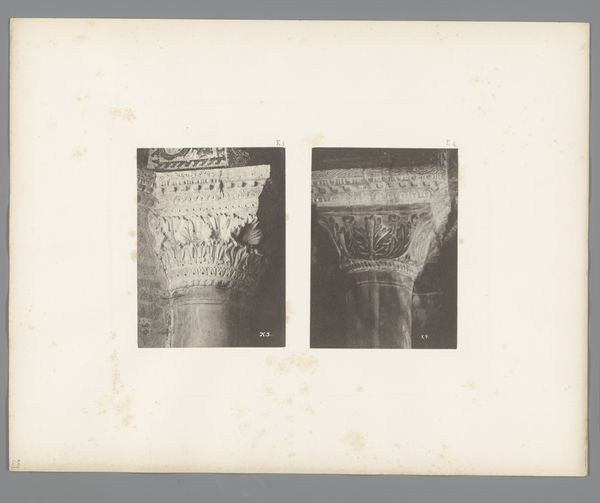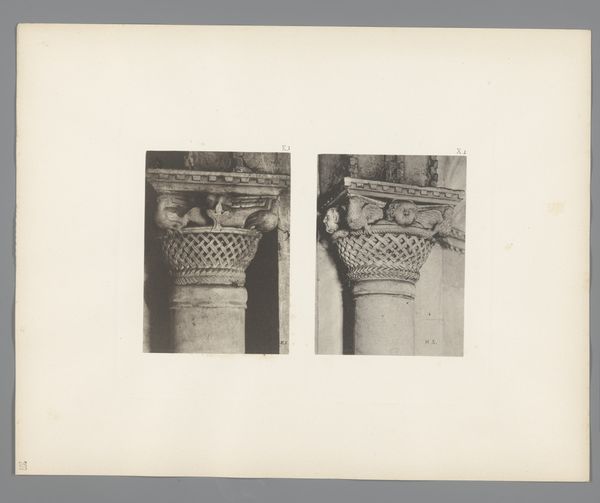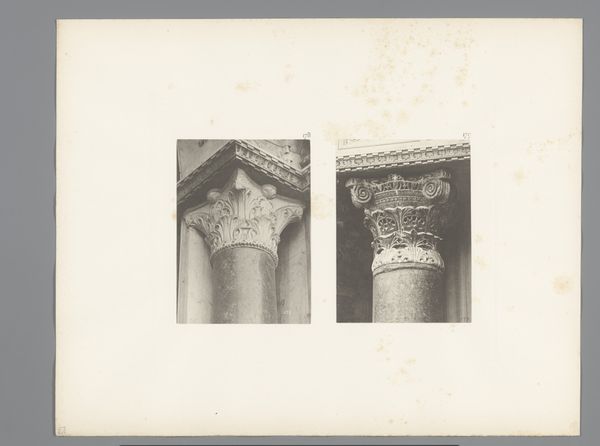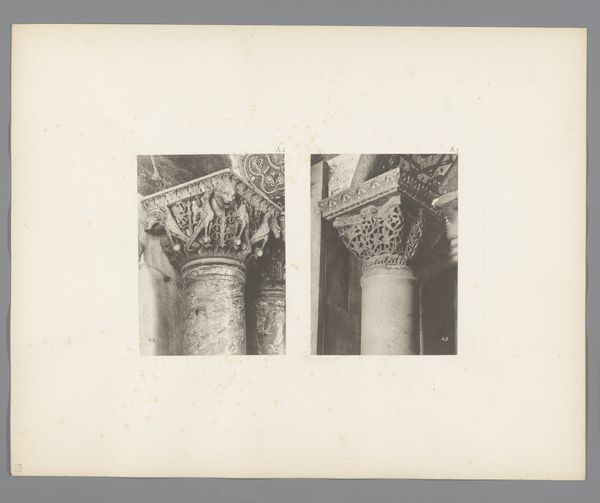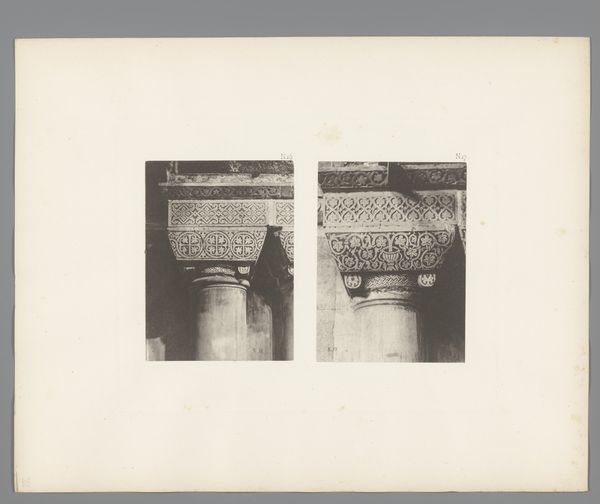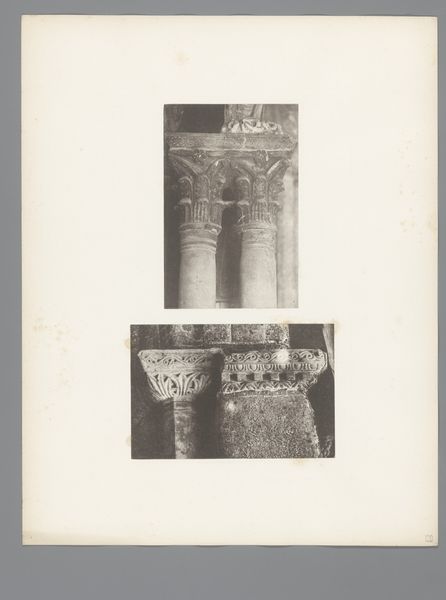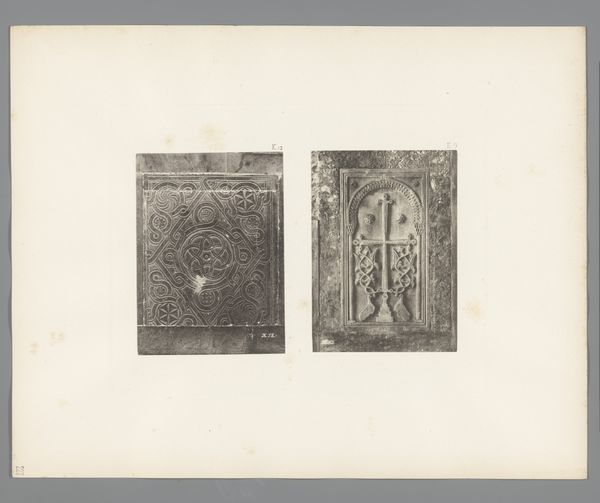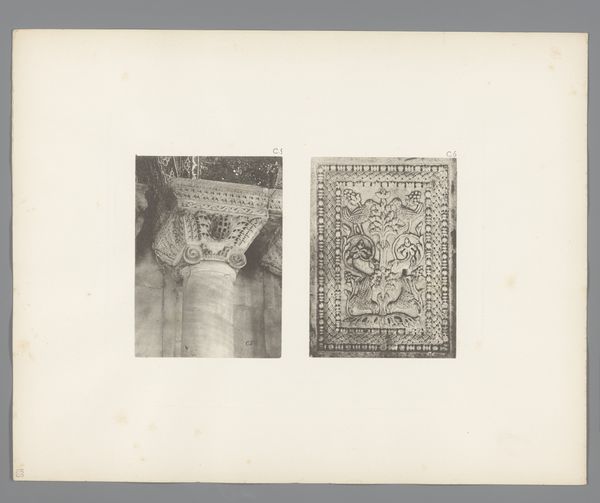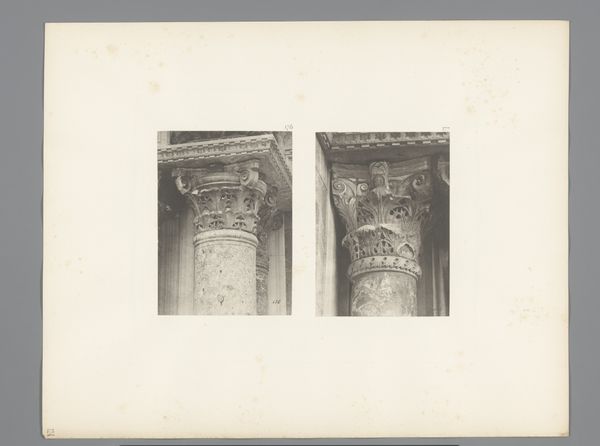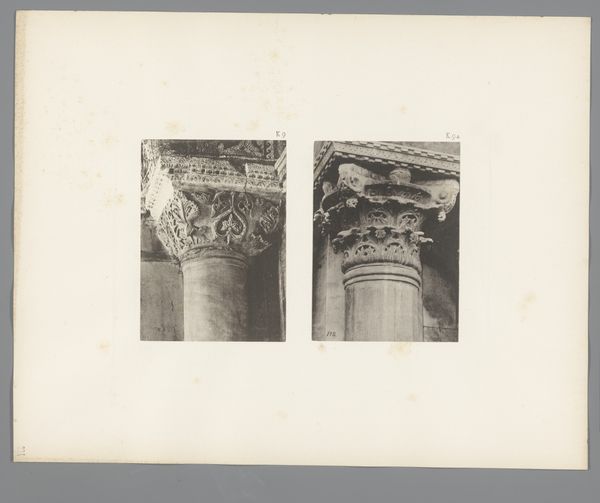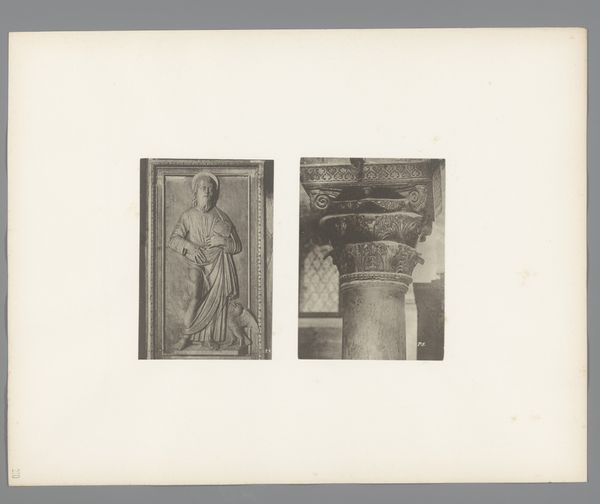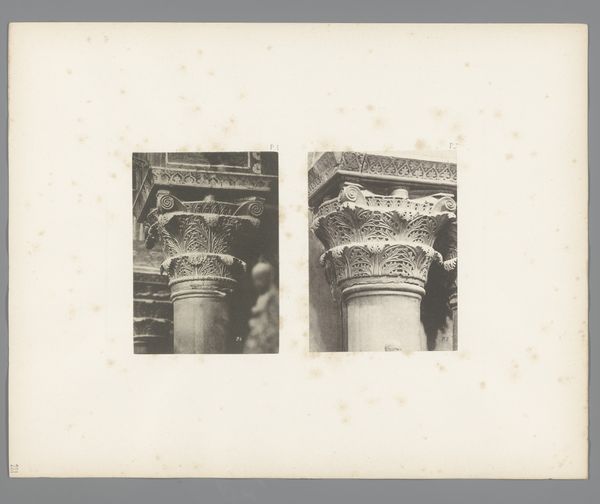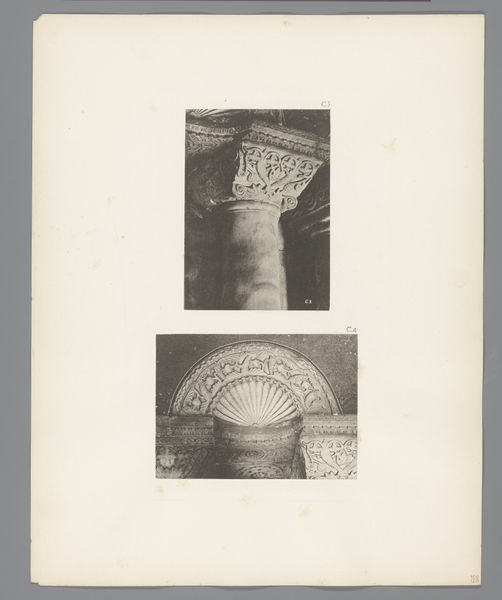
mosaic, print, photography, gelatin-silver-print, architecture
mosaic
byzantine-art
photography
geometric
gelatin-silver-print
history-painting
architecture
realism
Dimensions: height 310 mm, width 393 mm
Copyright: Rijks Museum: Open Domain
Curator: Here we have a gelatin silver print by Carl Heinrich Jacobi, capturing a capital and a mosaic from San Marco in Venice. It's dated before 1885. Editor: My first thought is the incredible contrast between the forms: the sturdy column and then the intricate geometry of the mosaic. It makes you want to reach out and feel the differences in texture. Curator: Absolutely. This image is interesting in that it shows both architectural support and artistic decoration of the space, a deliberate arrangement, I think, which speaks to the social hierarchies that are built within, through labor and production, but also in the design that dictates that the wealthy benefit disproportionately from these beautiful decorations while many never saw them. How are these grand architectural designs complicit in historical inequities of wealth distribution? Editor: You've hit upon a fascinating point regarding access and inequality. Looking closely at the image, you can really start thinking about the processes involved: stone carving, setting the mosaic tiles – laborious, skilled work. Whose hands made this? It is important to recall, those skilled artisans are very far removed from the doge, who could access these spaces in the pre-photographic days. Curator: The geometric design and Byzantine-inspired styling is evocative, isn't it? They reflect not only an aesthetic but the power dynamics inherent in that history – the power of the Church, the state... the stories of domination are materially encoded within the image. Editor: Exactly. It's a very Realist photography, in its composition. But the material itself transforms the subjects – stone, tile - into an image of grey tones. So this shifts it further back in time while also being fixed within this photo image. You also can’t ignore that photography was starting to grow in popularity and importance, which gave many working and middle class citizens increased access to imagery from around the world, beyond painting. It changed the consumption of materials but also experiences! Curator: The power to view what you’d never see in life. Jacobi really pushes us to question whose histories get visually recorded, and what does that visual legacy communicate. What does it omit? Editor: Precisely. Looking at it this way really highlights how images of material artifacts speak to broader themes of labor, identity, and even societal values in both the 19th century but also those coded in the items in Venice, to create something for audiences in 1885 to enjoy from far away. Curator: Agreed. Jacobi challenges us to consider the politics embedded within cultural and visual experiences. Editor: An image opens the gateway, then, for more consideration. It has us lingering long after the visit.
Comments
No comments
Be the first to comment and join the conversation on the ultimate creative platform.

